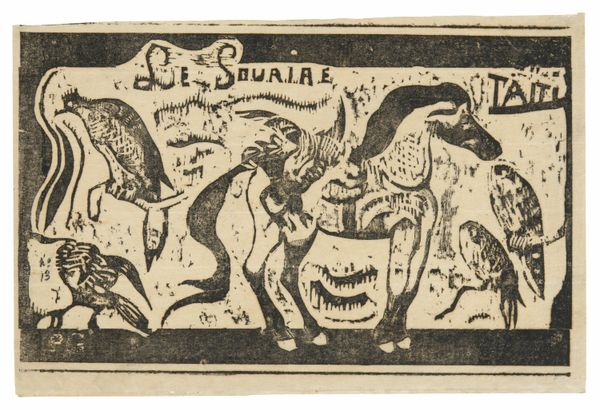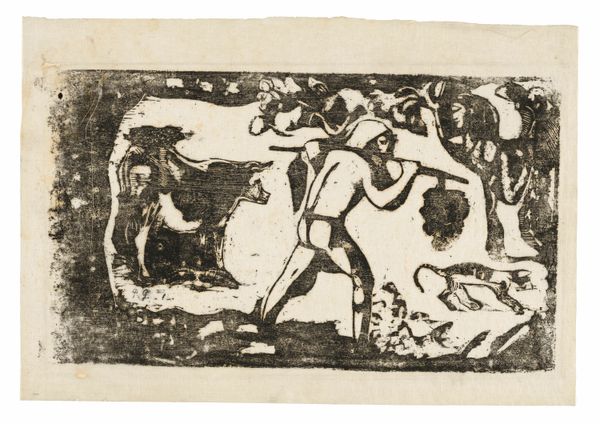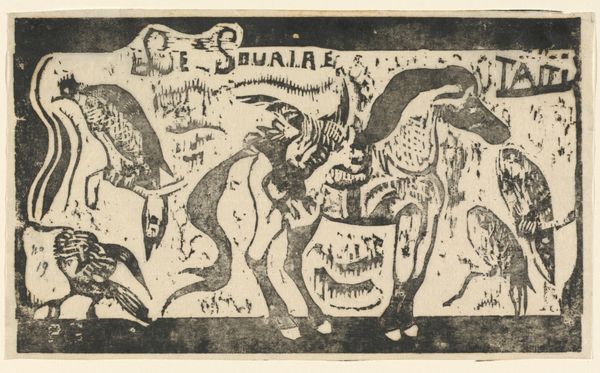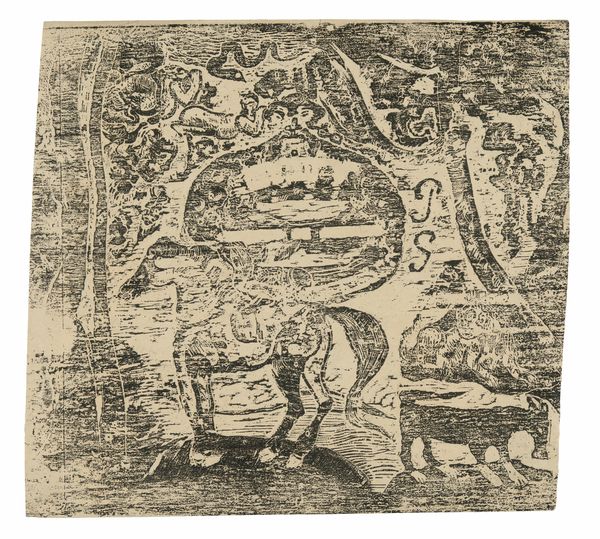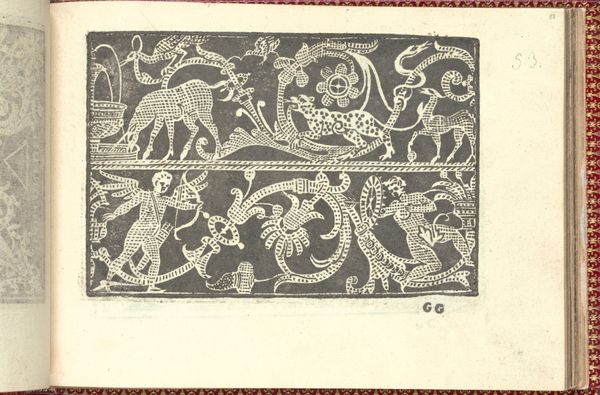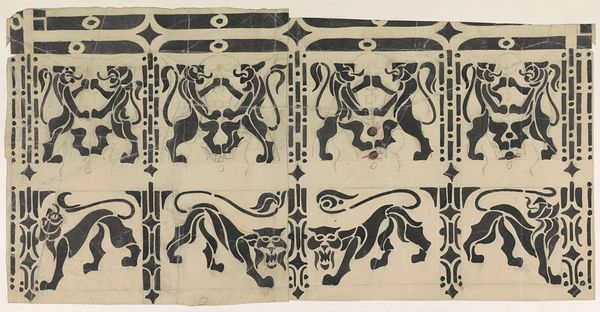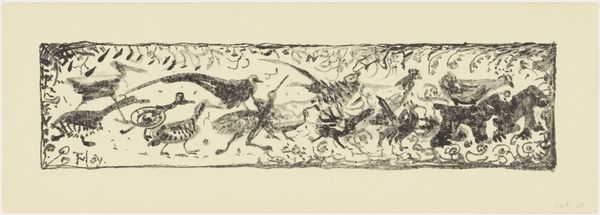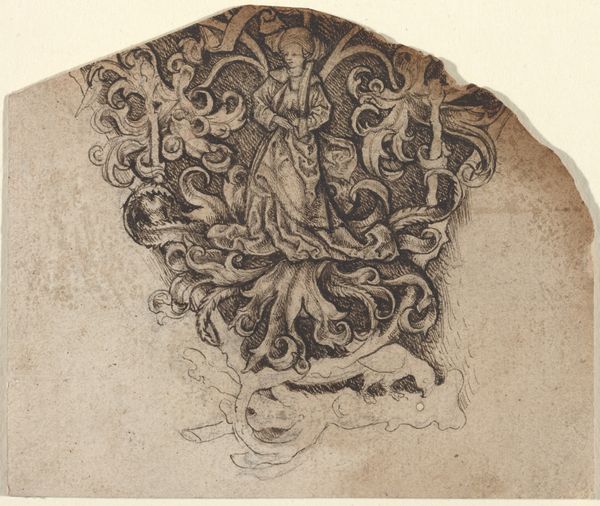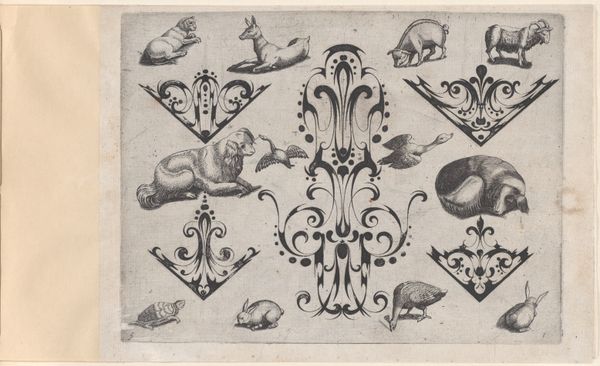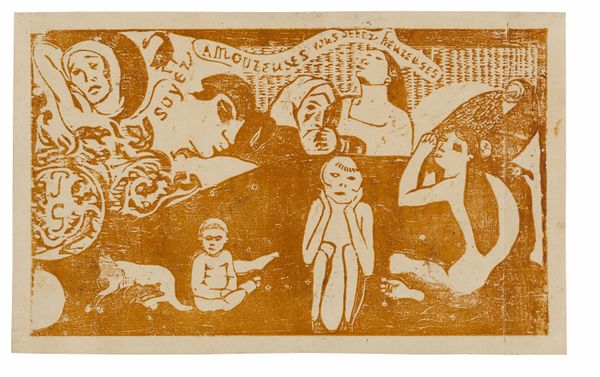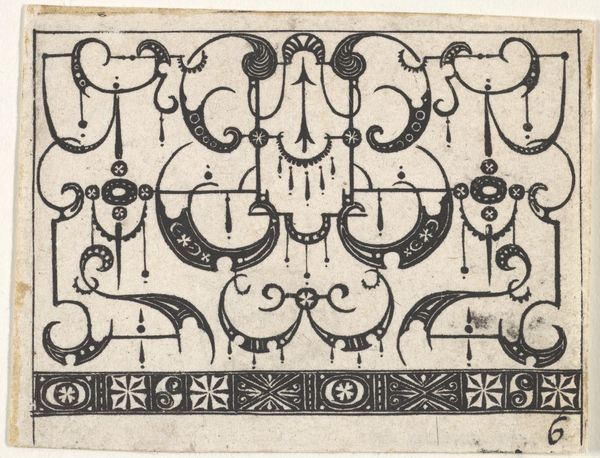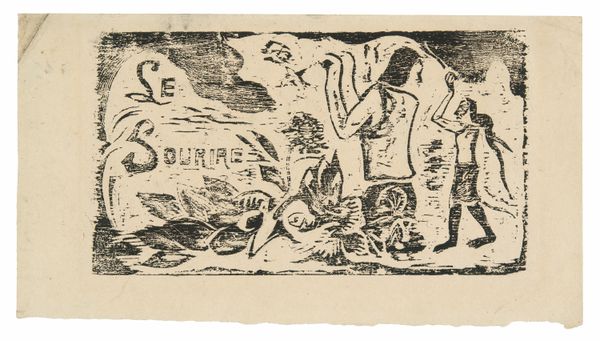
drawing, print, paper, ink, woodblock-print, woodcut
#
drawing
#
ink drawing
#
animal
# print
#
landscape
#
paper
#
ink
#
linocut print
#
woodblock-print
#
woodcut
#
symbolism
Dimensions: 142 × 221 mm (image); 168 × 245 mm (sheet)
Copyright: Public Domain
Paul Gauguin likely made this woodcut headpiece for his satirical review Le Sourire around 1899 in Tahiti. The title, meaning “the smile,” suggests irony, and the image teems with visual codes that reflect Gauguin’s complicated relationship with the colonial space. We see a horse, a potent symbol of colonial power, juxtaposed with native birds, evoking a sense of displacement. The blocky, primitive style nods to indigenous art, yet it's filtered through Gauguin’s European lens. The word "TAI" appears on the right, perhaps a reference to Tahiti, underscoring the artist's engagement with his environment. Gauguin, like many artists of his time, was critiquing Western artistic institutions while simultaneously benefiting from them. To fully understand this image, one needs to consider the power dynamics of French colonialism and the artistic institutions of late 19th-century Europe. Historical archives, Gauguin's letters, and colonial records can all offer valuable insights into the artist’s complex negotiation of his social context.
Comments
No comments
Be the first to comment and join the conversation on the ultimate creative platform.
